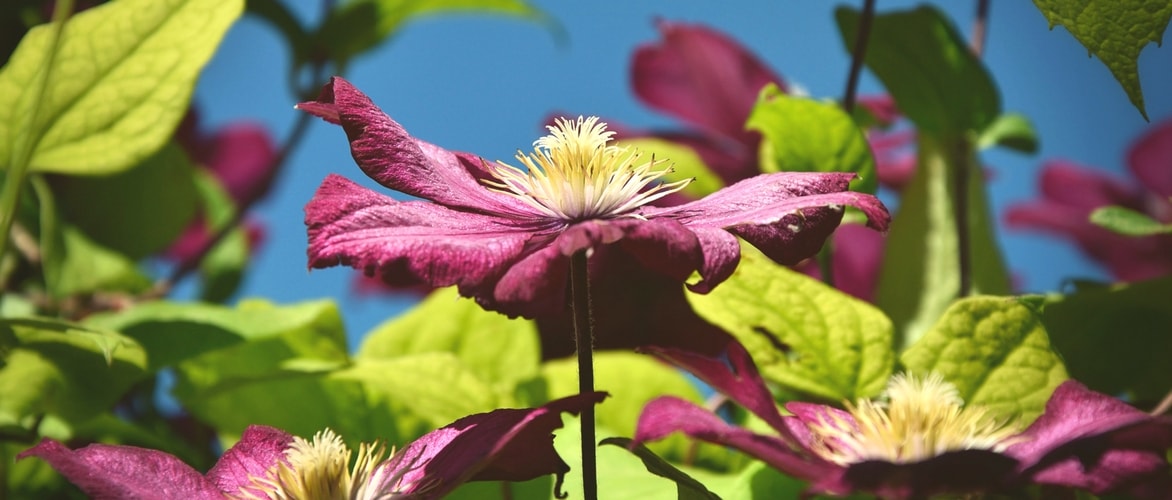
How to train and stake clematis?
All our tips to manage their growth
Contents
A voluble climbing plant, clematis brings a lot of colour to the garden with its large colourful flowers. They cling to their support by wrapping their voluble stems around it, thus climbing up pergolas, arbors, or house facades, if a trellis allows it. Therefore, unlike ivy, which can climb directly against a wall thanks to its climbing roots, they need a support to cling to!
Choose a suitable stake
The choice of the stake depends on the variety being grown. While a small, compact Clematis ‘Baby Star’, for example, will be satisfied with small bamboo stakes, a vigorous and tall clematis, such as Clematis terniflora, will be perfect for covering the wall of a house.
If you want to train your clematis against the façade of your house, place a steel cable or wire at least 10 centimetres from the wall. It is important to avoid pressing the plant too close to the wall, as air must be able to circulate. An overly confined atmosphere would encourage the development of diseases. You can also let it climb on a trellis. Choose one with about 10 centimetres of space between each mesh. It can also climb in a tree or bush if you plant it at the base.
Feel free to pair your clematis with another climbing plant. The most suitable companions are climbing roses. You can stake them together. We advise against pairing it with a wisteria, as it is very vigorous and could smother the clematis.
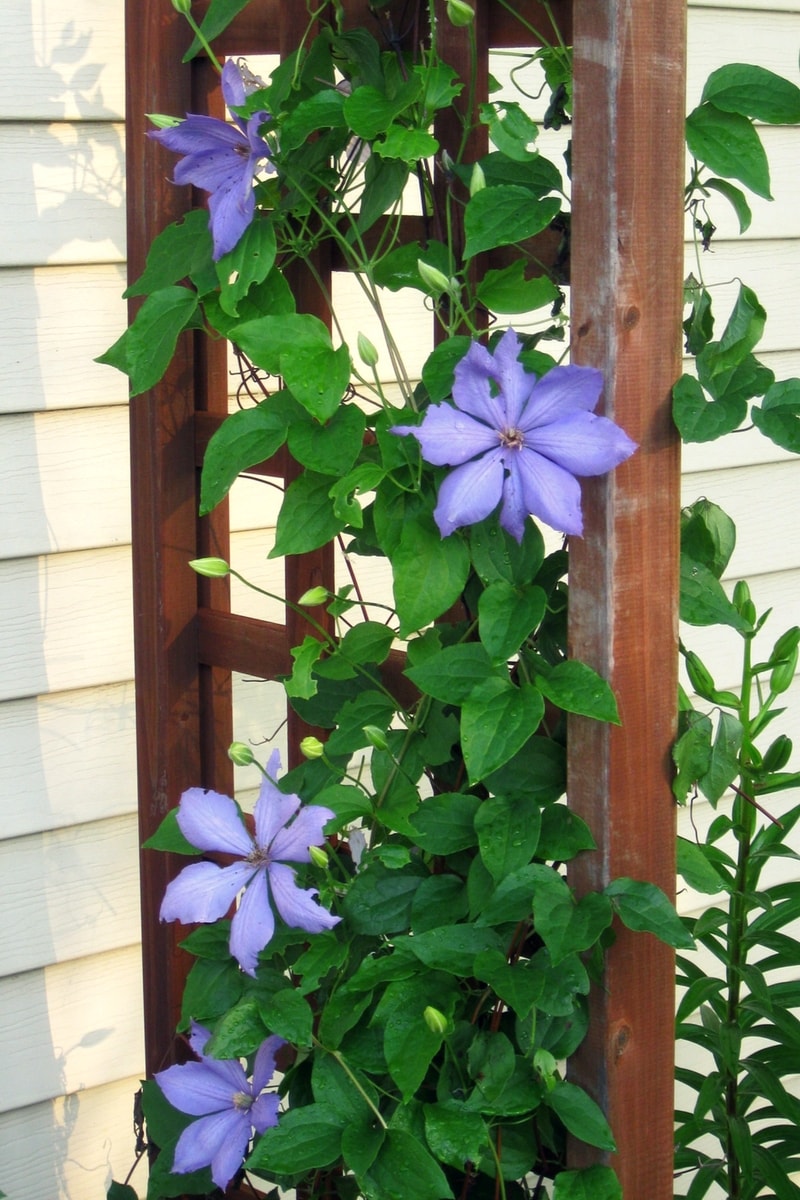
A clematis on a wooden trellis
Read also
Clematis: planting, pruning and careGuide its branches
As soon as you plant your clematis, start directing the young stems towards the support. You can tie them with raffia. When guiding the stems, do so gently as they are fragile and break easily. Later on, the clematis will cling to the support by itself.
Later, you can give it a more harmonious shape by pruning it, and if necessary, cut with pruning shears the stems that are growing in the wrong direction.
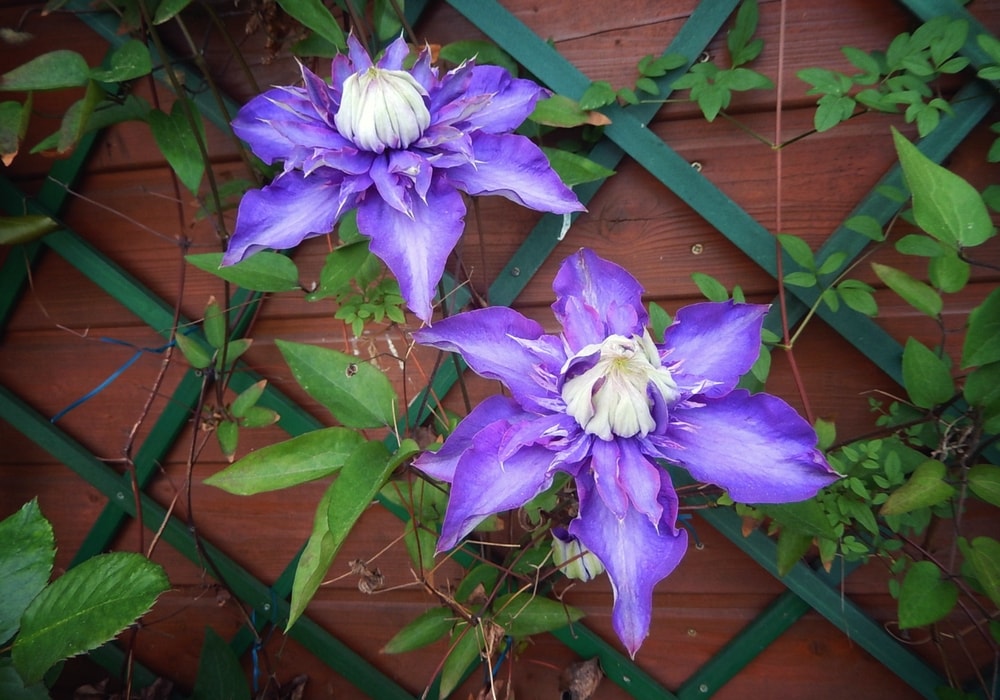
To climb against a facade, the clematis needs a support to attach its tendrils
Discover other Clematis
View all →Available in 0 sizes
Available in 0 sizes
Available in 1 sizes
Available in 1 sizes
Available in 1 sizes
Available in 1 sizes
Available in 1 sizes
Available in 1 sizes
Available in 1 sizes
Available in 1 sizes
- Subscribe!
- Contents

































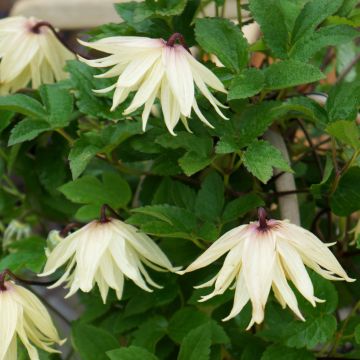
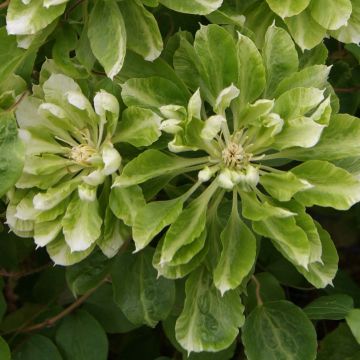
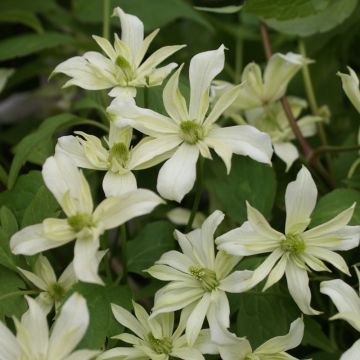
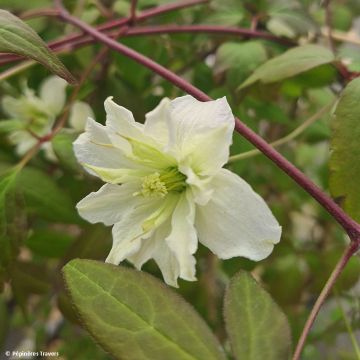

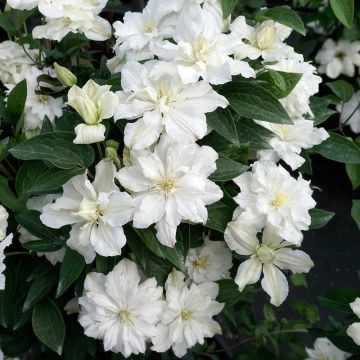

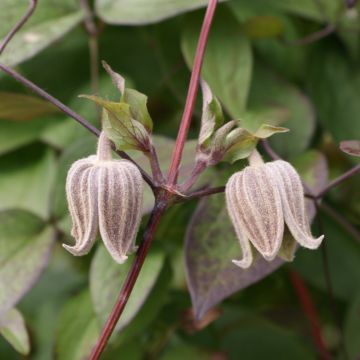
Comments